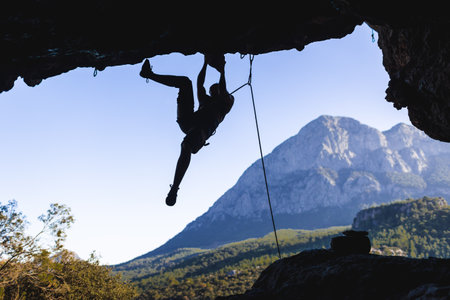Introduction to Weather Risks in UK Mountains
When it comes to exploring the beautiful mountains of the United Kingdom, one thing stands out above all: the weather is famously unpredictable. Whether you’re planning a family hike in the Lake District or tackling a challenging climb in Snowdonia, British mountain weather can change in an instant. This volatility is not just a quirky part of the UK’s charm—it poses real risks for anyone venturing into the hills. Sudden fog, unexpected rain, strong winds, and even snow can catch walkers and climbers off guard, turning a pleasant day out into a dangerous situation. That’s why understanding and preparing for the weather is absolutely essential. In this article, we’ll take a closer look at some well-known mountain incidents across the UK where misjudging the weather led to serious consequences. By learning from these real-life stories, we hope to highlight just how vital it is for everyone—from seasoned mountaineers to families on their first adventure—to respect the British climate and plan ahead before setting off.
2. The Cairngorm Plateau Tragedy
One of the most heart-breaking mountain incidents in British history is the Cairngorm Plateau Tragedy of 1971. This event unfolded when a group of schoolchildren and their leaders set out for a winter expedition in the Scottish Highlands, unaware of how swiftly weather conditions could turn perilous. The group was caught off-guard by a sudden and violent blizzard that swept across the plateau, drastically reducing visibility and making navigation nearly impossible.
The Sequence of Events
| Time | Event |
|---|---|
| Morning | Group departs for the planned walk under overcast but manageable conditions. |
| Midday | Weather rapidly deteriorates; wind speed increases and snow intensifies. |
| Afternoon | The party becomes disorientated due to whiteout conditions. |
| Nightfall | A makeshift shelter is built, but exposure has already taken its toll. |
| Following Day | Rescue efforts begin, but tragically, several lives are lost before help arrives. |
The Importance of Mountain Forecasts
This tragedy serves as a sobering reminder to always respect the unpredictable nature of British mountains. Weather forecasts are not simply suggestions; they are essential tools for survival. Even experienced walkers and climbers can underestimate how quickly things can change on high ground—especially in places like the Cairngorms, where weather is notoriously fickle.
Key Lessons from the Cairngorms Disaster:
- Check detailed mountain weather forecasts before setting out, not just general local forecasts.
- If conditions worsen unexpectedly, be prepared to turn back or seek shelter early.
- Proper equipment and emergency planning save lives—ensure every member knows what to do in an emergency.
- Never underestimate UK mountains, even if you’re familiar with them.
This incident changed how schools and outdoor groups approach mountain safety across Britain, leading to stricter guidelines and greater awareness about the importance of heeding weather warnings. Let this story encourage us all to take extra care and make wise choices whenever we head for the hills with family or friends.

3. Scafell Pike Sudden Weather Shift
Scafell Pike, standing proudly as England’s highest mountain, is a popular destination for outdoor enthusiasts and families alike. However, its impressive stature comes with rapidly changing weather conditions that often catch even experienced walkers off guard. In one widely reported incident, a group set out to enjoy what began as a bright, clear day on the fells. Spirits were high and visibility was excellent, giving the impression that their planned walk would be straightforward and safe.
As they ascended, however, the weather underwent a dramatic transformation. Without much warning, thick fog rolled in, quickly followed by persistent rain. The once familiar paths became difficult to follow, and landmarks vanished into the mist. The group had not packed adequate waterproof clothing or navigation aids, such as a compass or detailed map, trusting instead in favourable conditions and mobile phone coverage.
This sudden shift left them disoriented and vulnerable on exposed terrain. Their lack of contingency planning meant they struggled to find shelter or retrace their steps safely. Rescue teams were eventually called out after the group became lost and one member suffered mild hypothermia.
This incident on Scafell Pike highlights just how important it is to prepare for all eventualities when venturing into the UK’s mountains—even when the forecast looks promising at the outset. It serves as a sobering reminder that carrying suitable gear and having a clear plan B can make all the difference should the weather take an unexpected turn.
4. Snowdonia Climber’s Miscalculation
Snowdonia National Park in North Wales is renowned for its stunning vistas and challenging peaks, but the region is equally notorious for its unpredictable weather. One particularly well-known incident involved an experienced climber who underestimated the effects of wind chill and sudden rain showers on what seemed like a mild spring day. Despite starting with clear skies, conditions deteriorated rapidly as the climber ascended, with winds picking up speed and temperatures plummeting unexpectedly.
The Incident Unfolds
The climber, dressed for moderate weather, did not pack additional layers or waterproof clothing. As a sharp shower swept across the mountainside, gusty winds increased the chill factor dramatically. Within an hour, symptoms of hypothermia began to set in—shivering, confusion, and lack of coordination. Thankfully, the individual managed to call for help using a mobile phone before becoming completely incapacitated. Mountain Rescue responded swiftly, but the event was widely reported as a sobering reminder of local weather quirks.
Key Factors Leading to Hypothermia
| Contributing Factor | Details |
|---|---|
| Underestimated Wind Chill | Actual temperature felt much lower due to high winds at altitude. |
| Sudden Showers | Unexpected rain led to soaked clothing and rapid heat loss. |
| Lack of Appropriate Kit | No waterproofs or extra layers packed; insufficient protection from elements. |
| Poor Weather Monitoring | Relied on initial forecast rather than checking updates or observing changes during ascent. |
Lessons Learned for Local Climbers and Families
This incident highlights how quickly mountain weather can change in the UK, especially in places like Snowdonia. It serves as a crucial lesson for anyone venturing outdoors: always pack more than you think you’ll need, check weather updates frequently, and be prepared for the unexpected—even if it looks pleasant when you set off. For families and casual walkers alike, understanding that local microclimates can shift rapidly is key to staying safe while enjoying Britain’s beautiful landscapes.
5. Lessons for the British Outdoor Community
Understanding Weather: A Family Affair
One of the most important lessons from these UK mountain incidents is that understanding weather isnt just for seasoned mountaineers—its vital for everyone, from families on a weekend ramble to Duke of Edinburgh groups and solo hillwalkers. The British weather can change rapidly and unexpectedly, especially in mountainous regions like the Lake District or Scottish Highlands. Always check multiple forecasts, discuss potential changes with your group, and make sure everyone understands what to do if conditions turn sour.
Preparation Over Assumption
Many mishaps occurred because walkers assumed the weather would hold or relied on experience rather than evidence. Bring suitable clothing layers, waterproofs, and navigational tools, even if the day looks fine at breakfast. Pack enough food and water for unforeseen delays—being prepared is a British tradition, after all!
Communication and Teamwork
Effective communication within your group is crucial. Make sure someone knows your route and expected return time—this applies whether youre out with family or hiking mates. Encourage children and newer walkers to speak up about how theyre feeling; it’s better to turn back early than risk an incident.
Respecting Local Advice
Heed advice from local rangers, rescue teams, or experienced walkers you meet along the way. They know their patch better than anyone and can alert you to sudden changes in conditions or particular danger spots.
A Culture of Caution—and Joy
The joy of exploring Britain’s hills and mountains comes with responsibility. These case studies remind us that a culture of caution saves lives—without dampening the adventure! Whether you’re heading up Ben Nevis or exploring Snowdonia as a family, let every outing be shaped by preparation, awareness, and respect for the elements. That way, we can all enjoy the wild beauty of Britain’s uplands safely for generations to come.

